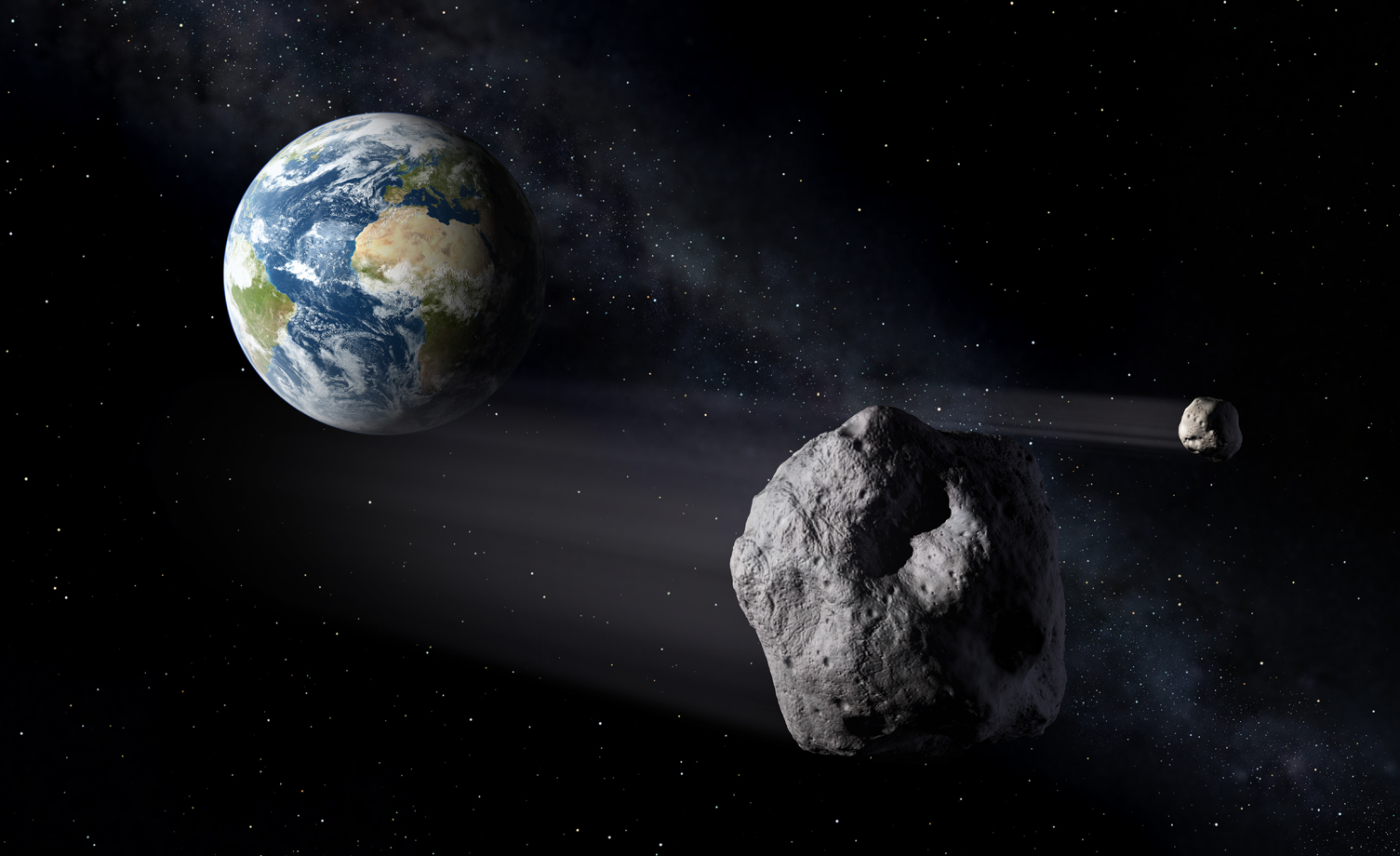A House-Size Asteroid Zipped by Earth Today
It was less than half the distance to the moon.

An asteroid the size of a house gave Earth a close shave today (April 18), passing nearer to our planet than any other space rock will for the rest of this year — that is, as far as we know.
Named 2019 GC6, the asteroid was discovered by NASA's Catalina Sky Survey near Tucson, Arizona, just last Tuesday (April 9), nine days before it flew by Earth. The giant rock made its closest approach this morning at 2:41 a.m. EDT (0641 GMT), when it whizzed by our plant at a safe distance of about 136,000 miles (219,000 kilometers), or slightly more than half the average distance between Earth and the moon.
At the time, the asteroid was traveling at a relative speed of about 12,600 mph (20,300 km/h), according to NASA's Jet Propulsion Laboratory. NASA estimated that the speeding space rock's diameter is "within a factor of two" of 49 feet (15 meters), which means it may be up to 98 feet (30 meters) wide.
Related: See the Dramatic Increase in Near-Earth Asteroids NASA Has Discovered (Video)
NASA has classified 2019 GC6 as a "potentially hazardous" near-Earth object (NEO), but that doesn't mean that Earth was in danger when it flew by. The agency uses that term for any NEO that comes within 5 million miles (8 million km) of Earth's orbit and is massive enough "to cause significant damage on Earth," according to NASA's Planetary Defense Coordination Office.
Still, the fact that many asteroids go undetected until the last minute — or even after they have already made a close flyby of our planet — makes NASA's loose definition of a potentially hazardous object seem a little less reassuring. The closest asteroid flyby so far this year happened a day before astronomers first detected the asteroid, named 2019 FC1. That space rock, when it flew by on March 28, was less than half as far away from Earth as the asteroid 2019 GC6 was today, according to EarthSky.org.
To help keep Earth safe, NASA and other organizations around the world are constantly scanning the skies for new threats, cataloguing every space rock near Earth's orbit and studying new ways to stop an Earthbound asteroid before disaster strikes.
Get the Space.com Newsletter
Breaking space news, the latest updates on rocket launches, skywatching events and more!
- Asteroid Hunting Mission Releases 5th Year of Data
- This Is NASA's New Plan to Detect and Destroy Asteroids Before They Hit Earth
- A 'Self-Driving' Spacecraft May Help Save Earth from Asteroid Collisions
Email Hanneke Weitering at hweitering@space.com or follow her @hannekescience. Follow us on Twitter @Spacedotcom and on Facebook.
Join our Space Forums to keep talking space on the latest missions, night sky and more! And if you have a news tip, correction or comment, let us know at: community@space.com.

Hanneke Weitering is a multimedia journalist in the Pacific Northwest reporting on the future of aviation at FutureFlight.aero and Aviation International News and was previously the Editor for Spaceflight and Astronomy news here at Space.com. As an editor with over 10 years of experience in science journalism she has previously written for Scholastic Classroom Magazines, MedPage Today and The Joint Institute for Computational Sciences at Oak Ridge National Laboratory. After studying physics at the University of Tennessee in her hometown of Knoxville, she earned her graduate degree in Science, Health and Environmental Reporting (SHERP) from New York University. Hanneke joined the Space.com team in 2016 as a staff writer and producer, covering topics including spaceflight and astronomy. She currently lives in Seattle, home of the Space Needle, with her cat and two snakes. In her spare time, Hanneke enjoys exploring the Rocky Mountains, basking in nature and looking for dark skies to gaze at the cosmos.









